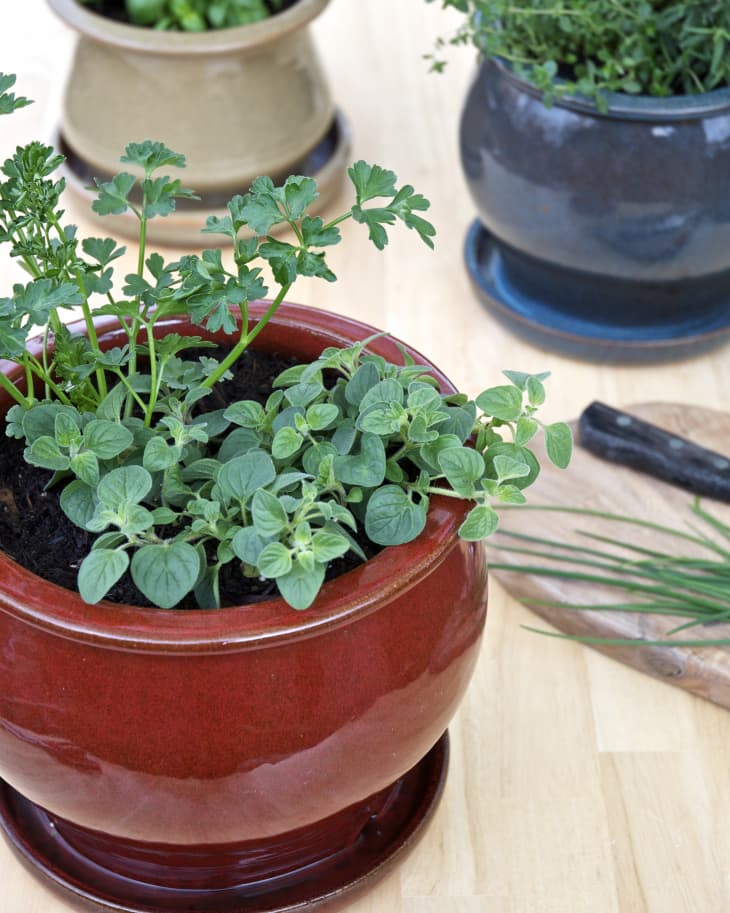Tips for a Small-Space Kitchen Herb Garden
One of my favorite moments, while driving through the city, is to glance up at an apartment building and spy a balcony spilling over with greenery. I have lived in my fair share of small spaces over the years and remember how gratifying it was to have edible plants in a seemingly impossible growing environment.
Whether you are short on space, lack direct sunlight, or live in a cold, challenging climate, there is a creative solution for a determined gardener to have easy access to fresh herbs all year long.
Solutions for Small Spaces
- Growing Indoors – Light is key. Although an unobstructed, east- or south-facing window is your easiest solution, consider installing a skylight or positioning a grow light over your herbs. I placed a large shelf under my one south-facing window and installed a skylight in my otherwise shaded kitchen.
- Growing on a Patio or Balcony – Find ways to utilize your vertical space. Hanging baskets and multilevel plant stands are excellent ways to add more herbs per square foot. If you have a rail, use the long window boxes and attach them to your balcony. Try unique twists on vertical gardening, like growing herbs in re-purposed pallets.
- Growing in a Small Outdoor Space – Landscape with food! Plant herbs along walkways or at the garden’s edge for easy harvesting. Since most herbs are so easy to grow and maintain, I plant a lot of herbs within my perennial garden, alongside flowers in my summer planters, and as companions with my vegetables. I also intersperse containers throughout my garden, for they provide added depth and are easily moveable in inclement weather.
Tips for Growing Herbs in Containers
1. Select hardy varieties and companion-plant. Choose the herbs that you cook with the most frequently and try to find heirloom varieties whenever possible. My personal favorite herbs to grow indoors are basil, parsley, and rosemary.
2. Choose a sunny location. Again, light is key. Position your pots directly beneath your window to maximize sunlight effectiveness. Don’t forget that pots can be moved around, when seasons and light conditions shift. Remember to rotate your pots, so that your herbs don’t become too “leggy.”
3. Use a container with good drainage. Make sure that you choose pots with drains and saucers. If you only have a sealed pot, place rocks at the base and toss some vermiculite into the soil to aid with drainage.
4. Water and fertilize accordingly. Don’t get overzealous. Keep a calendar, if you have trouble remembering when you watered last. Most plants die because of excessive attention, not the lack thereof.
5. Harvest properly. Wait until the plant is mature to harvest the first time. Never harvest more than one third of the plant at one given time. Afterwards, wait for that one third to grow back, before you harvest again. Quickly remove all flowers that appear, to ensure the most vibrant flavor. Herbs will expand and proliferate, if you prune them properly (see the photo of the mint, above). Do a little research to find out specific pruning needs for each herb.
More on Herbs and Cultivating in Small Spaces
- The 10 Best and Easiest to Grow Herbs
- A Pallet Frame Herb Garden in the Kitchen
- How to Make a One-Pot Indoor Herb Garden
Transportable Herb Garden
- Three Ways to Preserve Fresh Herbs
